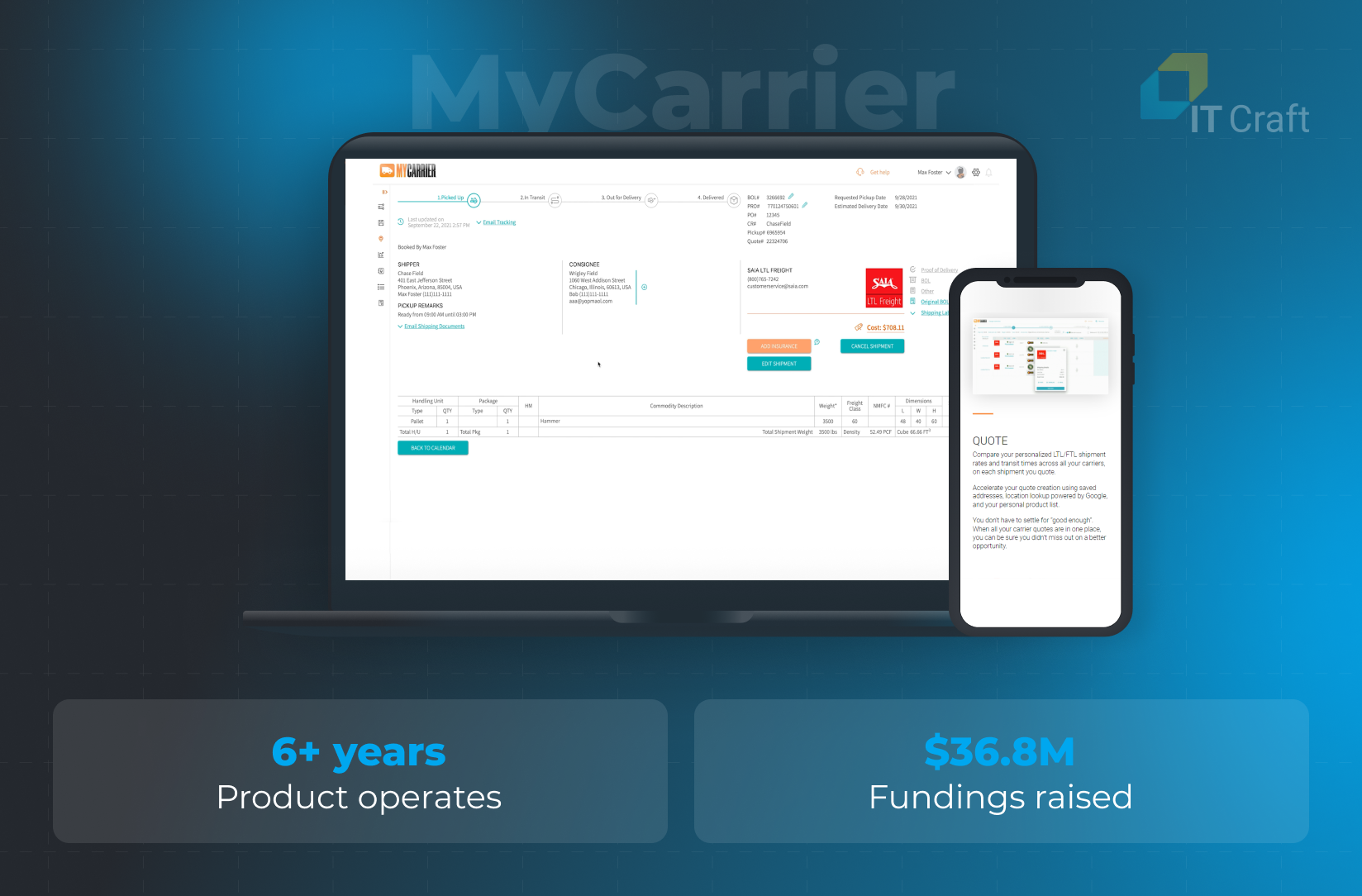According to a 2023 report on Global Talent Shortage, the number of missing talent is record high. IT and data are the most in-demand skills, as 77% of executives report difficulties engaging talents.
55% are planning to solve this through overseas hires. Why?
Outsourcing IT development is an efficient way to overcome talent pressure. It enables organizations to reach sustainability and complete long-term positive transformations.
Yet, success is only possible when partnering with a forward-thinking provider. Here is a guide on how to successfully outsource software development.
1
What is Outsourced Software Development
Outsourcing software development means contracting a specialized company or a third-party performer that works on a piece of software or its part.
The choice is wide. Market participants offer solutions for (almost) any specific development needs. Each of them serves best in a particular situation:
- Full-cycle vs. specialized
Usually, clients outsource software development services to a full-cycle provider. In this case, they get guidance through all stages, from ideas to launched products and expansions.
Yet, certain providers work on narrow tasks. They specialize in covering specific gaps, e.g., discovery phase, UX/UI design, QA, etc.
Also, certain providers focus on development-related activities, such as infrastructure maintenance, technical support, security audits, and more.
Software development companies often use popular technologies to ensure a wide client base. They might require time to learn how to handle rare technologies.
Specialized agencies are efficient in handling rare technologies. But they can become less effective once you extend or switch your tech stack.
- General vs. niche company
General development companies usually work with many industries and clients of different sizes (startups, enterprises, ecommerce, and more). They offer a lower hourly rate.
Software development boutiques are experts in a specific niche, e.g., outsourcing web development for pet stores or iPhone app development for startups—they have the best expertise there. They charge higher for decent quality but cannot help with rapid expansion.
- Service provider vs. freelancer
Freelancers provide a cost-effective alternative when you need something simple or rare. They work fast, being interested in successful project completion.
The downside of this software development outsourcing option is flexibility. You will need to hire several freelancers when the scope increases. Also, expert freelancers are expensive. Plus, you pay with your time, which you spend on coordination.
Check more on how to build an effective workflow in
Programming Outsourcing: Tips for Building a Winning Strategy
Read More
2
Why is Software Outsourcing Important?
It is hard to underestimate the significance of outsourcing software development for the modern economy. Just look at the market size.
The global revenue is forecasted to reach $460.10bn in 2023. It grows at 11.07% CAGR. The reason for it? High demand.
But why do businesses outsource software developers’ tasks as the driving power behind many projects? There are several reasons:
According to a Deloitte report, talent acquisition is the top challenge for 50% of executives. The demand for more talent is coupled with the problem of their retention.
It results in the growing pressure on businesses that must clash for scarce specialists with the top IT companies offering best-in-class working conditions—10 of 25 of the world’s best employees are tech- and software-related companies.
A slowing economy, increasing inflation, and high-interest rates force businesses to reconsider their strategy and manage costs wisely.
However, IT spending will increase to $4.7 trillion in 2024 or by 4.3% compared to 2023, according to Gartner research. The focus shifts from external deliverables to internal ones that enable resource saving and efficiency.
- Fierce market competition
Still, businesses should not completely abandon external deliverables. They compete for a smaller pool, which is the result of the weakened purchasing power of both consumers and consumer-related businesses.
Minimum time for changes is required to adapt to customer needs faster than competitors do—all under flat or shrinking budgets.
Advanced technologies, such as AI, cloud, blockchain, and others, open immense opportunities. Yet, their rapid advancement puts pressure on businesses that need IT and software implementation competencies.
They must turn to software development outsourcing to adjust fast to a disrupting market landscape. They get expert help with software architecture, integration, and fine-tuning.
According to IBM, cybercrimes will cost $10.5t/yr. by 2025. The average data breach costs a business $4.45m, while a ransomware attack costs $5.13m.
No industry, no business is safe. Little surprise, 81% of executives from the above Deloitte report put security as their top priority. They seek a cybersecurity specialist or a team to extend their capabilities.
3
Benefits of Outsourcing IT Development
There are many benefits of outsourcing software development. Let’s focus on the most important ones:
Software development outsourcing is a global market where business owners can find any specialization, skills, or niche expertise.
Hence, looking for a programmer or team for a specific gap becomes easier than finding a new hire locally. Those may be unavailable, cost too high, or be not interested in your project type.
- Flexibility in adding missing skills
Outsourcing companies are usually flexible in cooperation models and contract terms. They also offer flexible team composition for a project.
The number of team members increases when the scope grows. When the scope drops after a release and specific experts have no tasks, those team members switch to the next project.
- Added value through extra services
Outsourcing IT development does not equal programming outsourcing. Outsourced software development services also cover consulting, business analysis and requirements management, project management, app maintenance, and more.
This helps client companies lift development-related challenges off their shoulders and keep expenses minimal.
Businesses save costs directly by paying a lower hourly rate when they outsource software development to lower-cost destinations (compare averaged $150/h. in the USA vs. $50 in Central/Eastern Europe). This eventually transforms into up to 50% savings from the initial budget.
Outsourcing companies enable businesses to save indirectly and repurpose their limited resources through automation, DevOps, and optimization. It allows businesses to decrease their monthly infrastructure bills, increase team productivity, and more.
-

IT Craft’s packaged DevOps services decrease development and operational costs by 34% on average: StartOps Services
4
Software Development Outsourcing Models
The right outsourcing software development services enable businesses to balance costs, pace, and outcomes. The wrong one can severely damage project quality or make delivery impossible.
The proper choice depends on the project type, client’s involvement, and addressed problems. Let’s analyze this in further detail:
Based on engagement
Dedicated team
Dedicated team means outsourcing IT development to an established team. It takes over the entire project or its specific part works, requiring minimum supervision on the client side.
- Dedicated team is the best option for both short- and long-term project-based development.
- Flexible team balancing is required to manage scope changes effectively.
Staff augmentation
Staff augmentation means adding skilled engineers to an existing team. They remain employees of a service provider but work directly with clients and report to client’s managers.
While short-term projects are common, long-term cooperation is also possible.
- Fast recruitment, scaling, and increased flexibility.
- Time overlaps and adjustment of current processes.
Managed services
Managed services focus on uninterrupted software operations and management. The teams often work autonomously in 24/7/365 mode but in tight coordination with the client’s development team.
- Transparent, predictable services.
- Does not apply to all types of activities.
Based on location
Onshore
The client and provider reside in the same country.
- The same culture, prompt communication, and a fast project pace.
- High hourly rates and limited choice of talents, which can be prohibitive on simple or medium-complexity projects.
Nearshore
The provider resides in a neighboring country.
- Slight to no time difference, similar working ethics, and shared cultural patterns.
- The need to travel to see the team personally. Language barriers are also possible.
Offshore
The provider is located in a far destination.
- Low costs and a wide talent pool.
- Big difference between top and bottom performance. Risks include cultural barriers, hidden costs, problems with attitude, and more. Always choose a reliable provider!
Based on contract type
Fixed price
The client and provider agree on the total price, which they fixate in the contract terms.
- Cost visibility is great for simple projects.
- Any changes require additional negotiations.
Time and material
The client and provider agree on the hourly rate for the team/developers. The client pays for the time spent.
- Team flexibility to solve challenges on complex projects.
- It is easy to creep costs without proper project management.
Service-level agreement (SLA)
The parties agree on the scope and type of provided services, performance, reaction time, etc. The client pays a fixed monthly fee.
- Clients know in advance what they get.
- It applies to maintenance-related activities.

5
Top Ten Tips on How to Successfully Outsource Software Development
Every project comes with opportunities, risks, and challenges. You should carefully source the best-suited partner, establish communication and process, and stay in constant touch with your team for successful IT development outsourcing.
Is that all?
Well, no. Here are ten further tips that will greatly improve your chances of striking gold:

- Tip 1. Revise your experience.
Some teams can be amazingly talented and perfectly priced. Yet, they require unambiguous directions rather than thinking through the best path. You need relevant experience in software development when you outsource to a less skilled team.
Are you rather a business-savvy person? Look for a proactive, albeit a more expensive, team.
- Tip 2. Formulate your expectations.
Imagine your ideal candidates for solving your specific pain points. What priorities should they address:
- Fast response?
- Industry expertise?
- Impeccable English?
- Same time zone?
Divide all points into two categories: must-have and changeable. This helps you narrow down your search.
Remember, outsourcing IT development is primarily about people rather than tech, tools, or methodologies. Focus on finding the right people rather than obtaining a specific technology or service experience.
Clear vision and transparency regarding short- and long-term planning are crucial for successful project implementation. Leave no room for guesswork.
Tell your expectations upfront and discuss a relevant path with your future team. Ensure they understand your vision and limits. They know how to address them best.
- Tip 4. Read the contract.
Some companies are better at billing than at abiding by their obligations. Read contract terms carefully before arranging any deal. Find a lawyer to discuss details if a contract covers the provider rather than you, the client.
Negotiate on terms (minimum length, scope, guarantees). Switch a provider if mutual agreement is not possible.
Also, ask the outsourcing IT development provider to sign an NDA for your peace of mind.
Do you still need to decide whether to sign the dotted line? Start small. Give the team a pilot task or initiate project discovery.
This enables you to evaluate whether the team can deliver its promises. If you do not like the team’s performance, you will terminate the relationship after the testing task ends.
From IT Craft’s experience, many projects started with a pilot task, morphing into long-term partnerships.
- Tip 6. Communicate with the team.
You cannot self-dismiss when you want to successfully outsource software development. Regular discussions about progress, changes, improvements, and impact on agreed measurables are incredibly valuable. They ensure all relevant staff’s full support, understanding, and involvement.
- Tip 7. Build relationships with your contact point.
If you have no in-house project manager, think of hiring a PM. They will guide you through processes and translate your needs to developers, which you will have to do otherwise. The PM can also act as a product owner if you have no specific person on your side.
A crucial point here is taking time to establish good relationships. The PM is a key figure. A good PM facilitates a project. Software development outsourcing becomes effective.
- Tip 8. Trust the process.
On the one hand, you must define precise parameters for what is covered and what is not. Written briefs must be clear, straightforward, and avoid ambiguity.
On the other hand, be open to the team’s suggestions. You do not want to fall into the ‘outsourcing paradox’ when everything is so strictly prescribed that the team cannot bring their expertise, creativity, and experience. Be prepared to make changes while clearly viewing your priority Key Performance Indicators (KPIs).
- Tip 9. Consider long-term needs.
When you plan to grow and expand, you need a provider capable of quickly scaling your team or rotating specialists.
Some activities are crucial at the project start but require less work at later stages, e.g., UI design. The others are less important initially but are the key to project progress at later stages, e.g., test automation and DevOps.
Ensure to work with a large organization that is staffed well; thus, it can handle the growing workload with the same effectiveness.
- Tip 10. Prepare a backup plan.
Last but not least, never let vendor dependency happen. Think of an alternative provider if the team stops performing or your key engineers leave without a due replacement from the provider.
-

IT Craft offers a five-step path to project rescue. It ensures minimum reasonable time from project takeover to bringing the derailed project back on track.
6
What Should You Look for to Successfully Outsource Software Development
Let’s focus on key aspects. Here is an outline of what makes the difference between a strong performer and a mediocre software outsourcing provider.
Expertise and a proactive attitude are the two biggest assets of an outsourcing development team. Without them, the team can barely meet your expectations and never exceed them.
A dependable team does its best to understand your processes, goals, and limitations. It always comes back with questions until every detail is clear. Engineers take ownership of their estimates and deliverables. They regularly revise plans and results, addressing issues, gaps, and inefficiencies.
Effective workflow with an emphasis on your actual needs is crucial. The project manager or developers can be nice and efficient on their own.
But when the team lacks integrity, breakdowns in communication will happen. You will need to spend time on management, communication, and follow-ups. Still, tasks will be completed incorrectly, leading to delays or scope creep.
Again, project discovery or a pilot task helps you detect blocks early and either remove them or replace the team, ensuring you successfully outsource software development.
Dishonest providers offer low hourly rates and try to compensate them by charging for “extra” services or extending the initial timeline.
Ensure the pricing is clear and transparent. Check that you will not end up paying for a load of extra ‘beyond-standard-package’ services from which your business isn’t realistically going to benefit.
Also, ensure you can flexibly change your team composition. This lets you balance costs based on anticipated workload.
IT Craft engineers are here to help you launch successfully.
Check it: custom development services.
Learn More
7
Our Expertise
Peakfactor
Is one of our oldest clients from Germany. Our cooperation started with a small intranet MVP.
The client requested basic features for a custom network that a closed community of pharmacists uses. The MVP was successful, and the product continues to grow since its launch.

MyCarrier
Is an online portal for shipment management.
Its founders planned functionality for transparent, less-than-truck shipments. They validated the initial concept then expanded to truck shipments. The team focused on scaling as the number of users kept increasing.

!
Conclusion
Outsourcing software development is a well-established practice for modern businesses of all kinds and sizes. The hyper-focused expertise providers bring to a project is fundamental to the overall momentum.
There is no guaranteed recipe to successfully outsource software development. Your best chances will generally emerge through finding the right team and ensuring mutually beneficial cooperation terms.
When deciding on how to outsource software development best, keep in mind the vital ingredients:
- expertise and attitude
- established processes
- efficient communication and transparency
- short- and long-term adjustments








